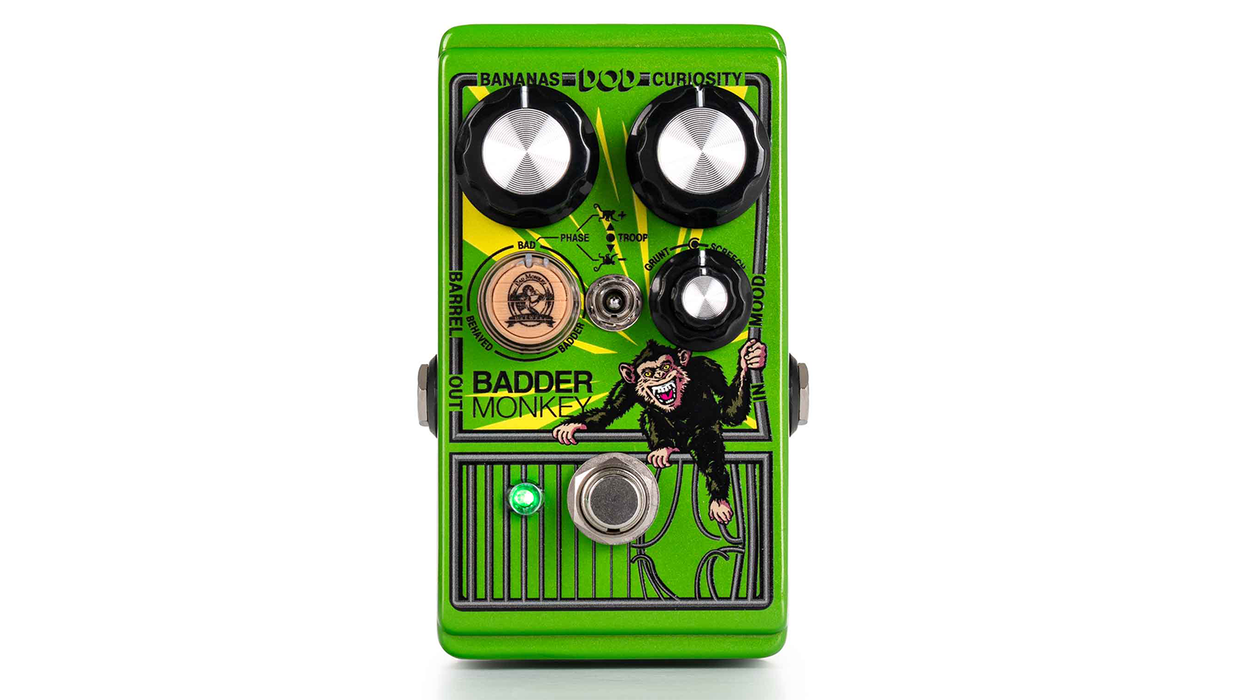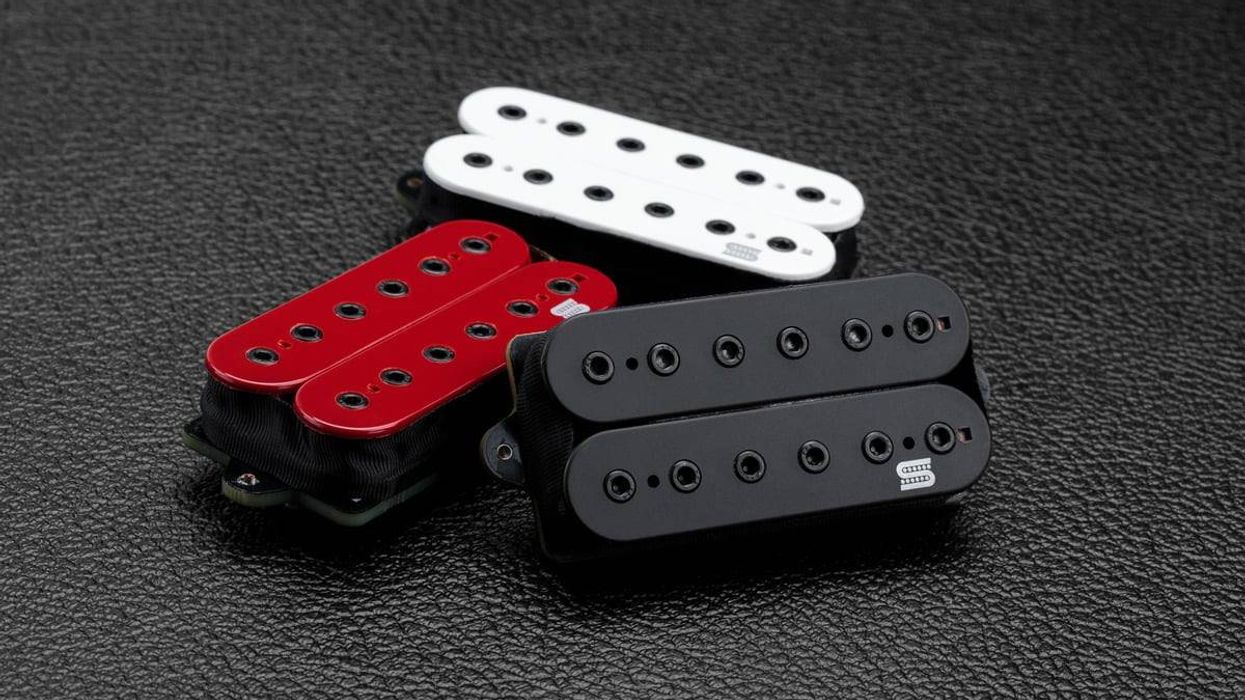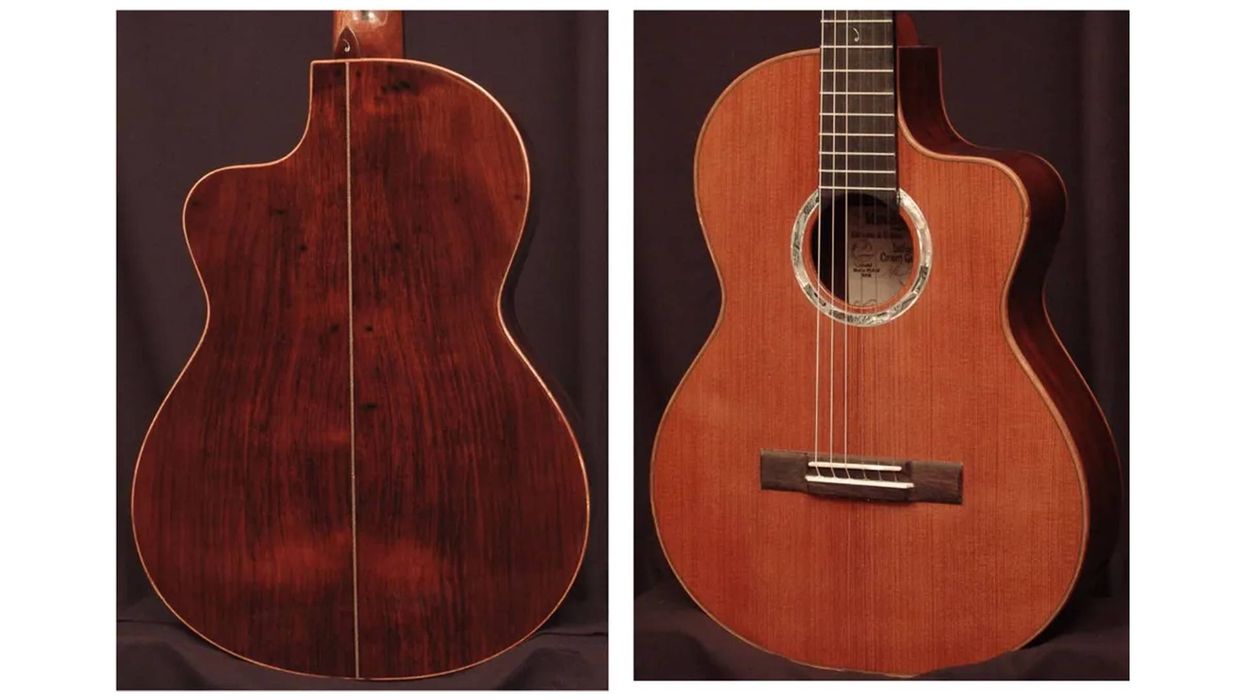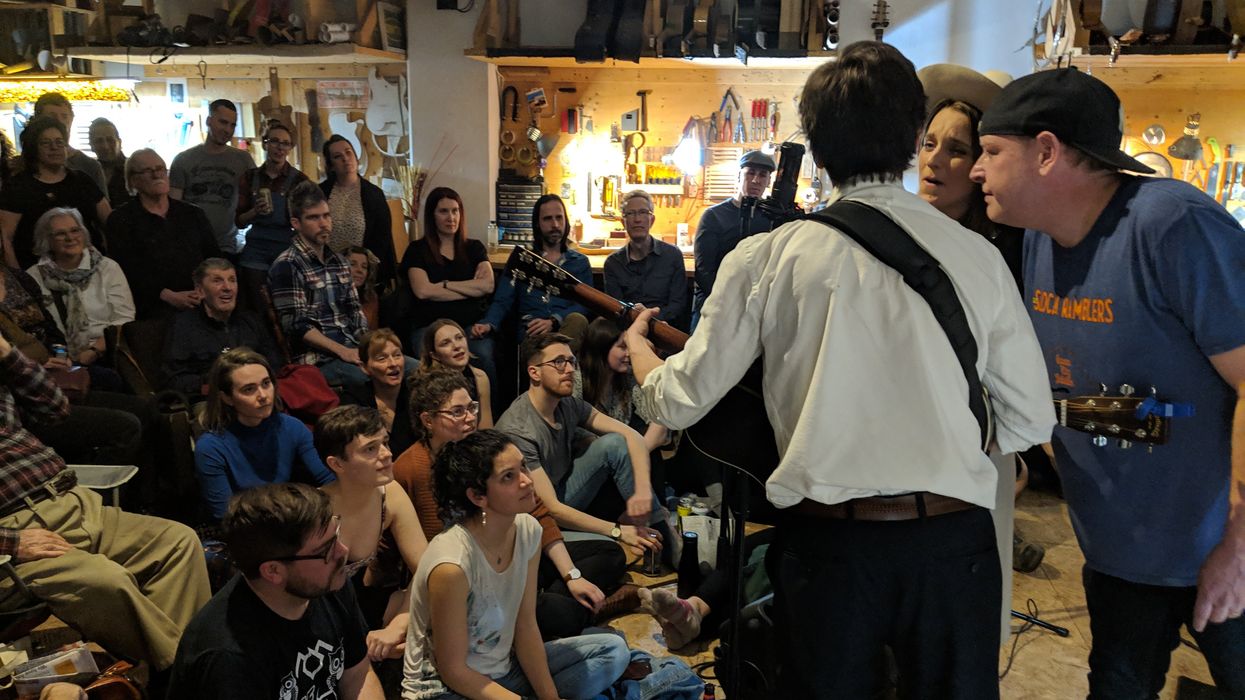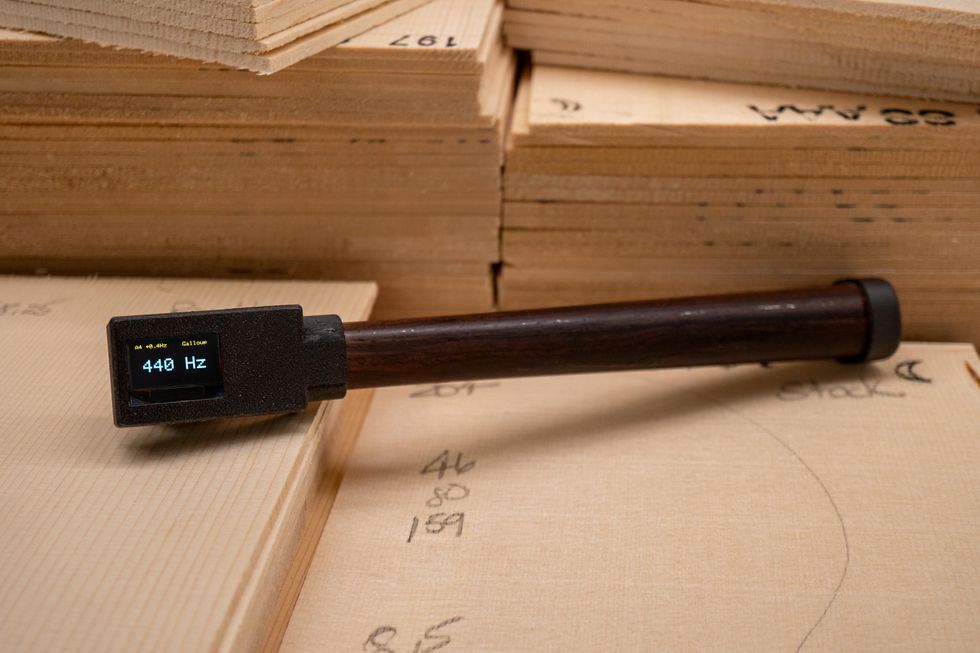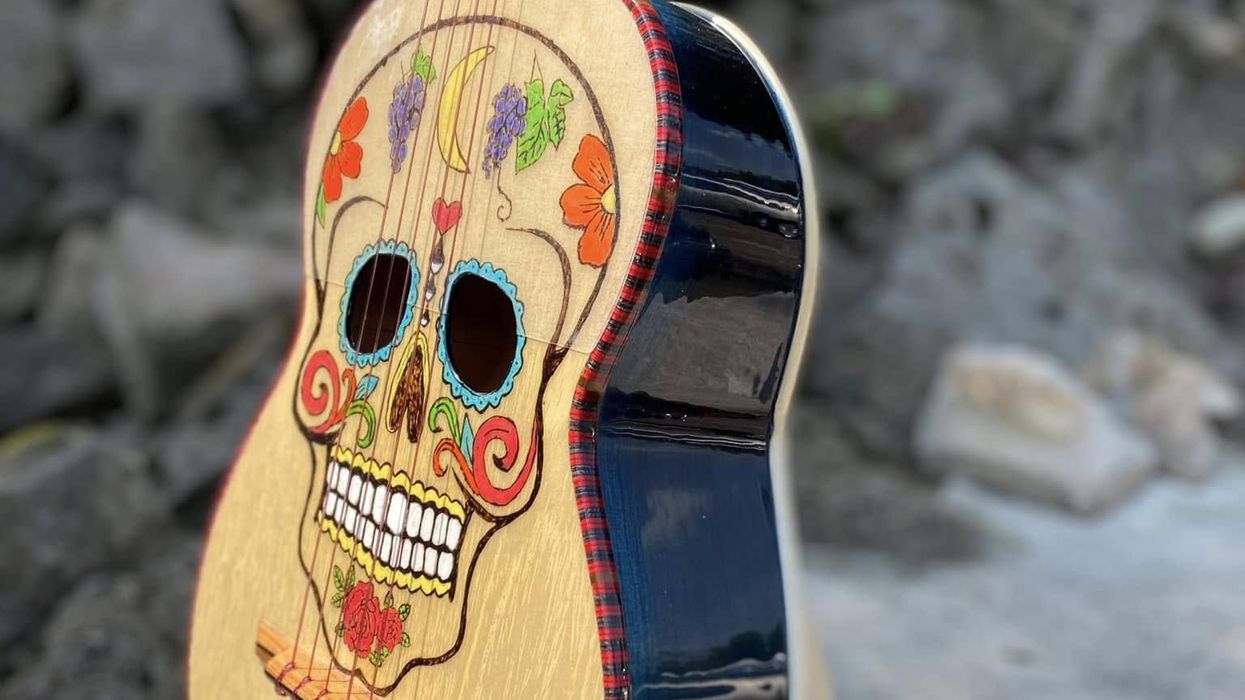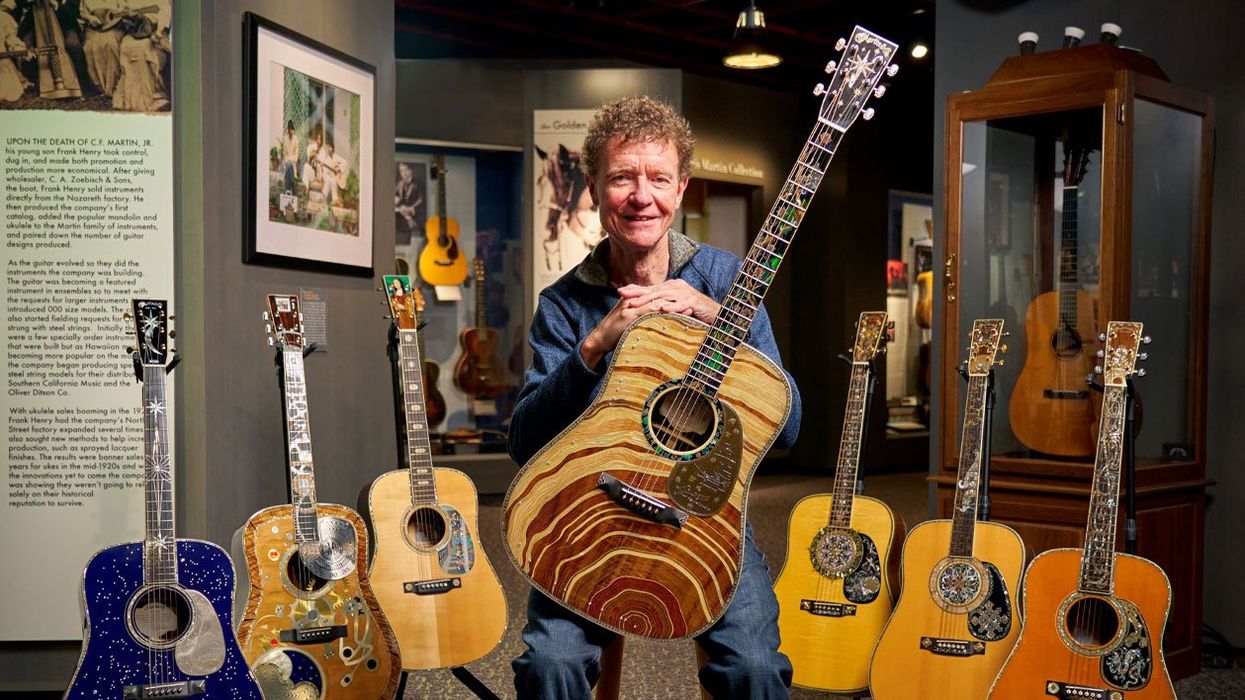I travel a lot and meet all types of people. Casual conversations on airplanes or in hotel bars invariably lead to “what do you do?” questions. Sometimes when I’m tired, I feel like telling people I’m a plumber or insurance salesman. If I say I design acoustic amplification gear, the response is often, “Gee, I thought ‘acoustic’ meant the guitars weren’t amplified.’” It can take substantial energy to explain the difference between acoustic guitars, electric guitars, and amplified acoustic guitars to a non-musician.
When you think about it though, their responses are natural. After all, acoustic amplification often means applying modern tools and technology to musical instruments that were designed and optimized centuries ago. The art of the instrument designer, the technology that we bring to bear, and the creativity of the musician who will ultimately play the instrument all reside at a busy and often confusing intersection.
Properly understood and applied, technology can open the floodgates of creativity. But when technology isn’t understood or properly applied, its mesmerizing nature can impede or even destroy the creative process. The most successful navigators of that intersection of creativity and technology are those who recognize that their personal biases and tendencies can easily corrupt the decision process.
We all have a story. Here’s mine.
The Fishman Flyer
I grew up in a very small town in the foothills of the Catskill Mountains in upstate New York. I have fond memories of summer trips to the mountain lakes, bike rides with my friends to our favorite fishing streams, climbing trees full of apples in the fall, and endless hours of sledding and ice skating on frozen ponds in the winter—plenty of fun, but nothing particularly inspiring.
This all changed when my parents brought home a brand new Silvertone console record player, along with a half dozen classical albums for my dad and some Leroy Anderson pop stuff that my mom liked. Boy, did it sound great! I listened to each album hundreds of times. The first record I bought was Fats Domino’s rock ’n’ roll classic “Blueberry Hill.” I was hooked for life!
Another lifelong passion was awakened about the same time during a visit to my grandparents. My grandfather was a tinkerer who was always fixing things. He gave me a canvas bag of old hand tools and some beat-up lawn-mower engines to mess around with. Much to the chagrin of my parents, I was soon bombing around the neighborhood in my own wooden go-kart running on baby carriage wheels and powered by a lawn-mower engine with no muffler, belching smoke and spewing oil. I was convinced I would be the next Stirling Moss.
Okay, you’re asking yourself, what does this have to do with acoustic amplification? Plenty! My early experiences led me to literally thousands of blues and jazz gigs as a bass player, years of great car building and racing experiences, and later, a career as a mechanical engineer and amplification gear designer. These life experiences have shaped the way I approach problems. There’s creative passion from the musician side, but also an engineer’s analytical approach to gear. And it’s precisely this mix that almost prevented me from experiencing something very special.
Cable Reconsidered
About three years ago I was working on a project that required serious recording with very high-end guitars and very special microphones. As usual when I get involved in this type of project, I travelled to Nashville to work with my friend and recording mentor Bil VornDick. Several times during the three-day session, Bil would urge me to check out a new mic and instrument cable design he was enamored with.
From my perspective, wire was wire. Having tried many expensive “miracle cables” in the past without being impressed, I didn’t give his suggestion much further thought. But six months later, during the last hours of a four-day NAMM show, I found myself walking by the small booth showing these cables. I bought a couple of 1/4" instrument cables and one microphone cable. I shipped them back to my shop, where they sat on my workbench for four months.
I often work late. Once I found myself finishing a new transducer design at 1 o’clock in the morning. I needed to hang around for another hour while the adhesive hardened on a pickup I was testing. While waiting, the cables on my bench caught my eye, so I decided to check them out. Since I was in an engineering mood, I did some tests, measuring their electrical properties and running some sweeps and impulse-response tests. As I’d expected, I found nothing outstanding compared to the lower-cost “standard” cables in our studio.
But as I was about to leave, I decided to actually have a listen. I plugged in a really nice Martin guitar, and what I heard made my jaw drop! By the time the sun rose hours later, I’d played literally dozens of guitars and basses through our recording gear and every amp in the shop. I was totally blown away! The sound clarity and touch responsiveness was far better beyond anything I’d ever experienced.
I’d indeed chosen the right road at that critical intersection. If I’d strictly followed my analytical nature, I would’ve totally missed something remarkable yet unexplainable. When you find yourself at a crossroads, be aware of your story and your nature, and try to set aside your biases and preconceptions. You never know what amazing experiences might be just around the corner.


